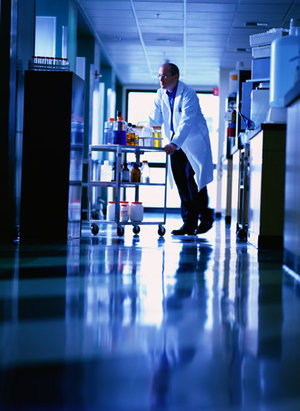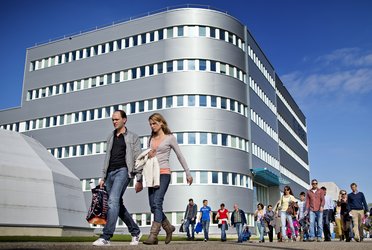What kind of testing do the Materials and Components Laboratories carry out?
The Laboratories evaluate the performance of novel materials, components and the results of new engineering processes in simulated space conditions. They also execute detailed analysis of materials and parts that have failed during tests to identify the precise cause.
In addition the Laboratories sometimes examine parts that have been retrieved from orbit and performs in-orbit failure investigations, identifying the cause of anomalies aboard spacecraft. For instance the Laboratories used their facilities to replicate the failure of the Planetary Fourier Spectrometer (PFS) aboard ESA's Venus Express, isolating why the failure took place so lessons learnt can be applied to follow-on missions.
The Laboratories test both metallic and ceramic materials along with carbon composites and other novel substances. In preparation for ESA's forthcoming Cosmic Visions missions, for example, the Laboratories performed preparatory testing to decide on the types of materials most suited to the environmental challenges these missions would face.
So the Laboratories evaluated low density, high stiffness materials with low coefficients of thermal expansion for future deep space observatories such as LISA, James Webb Space Telescope and Gaia and identifying materials able to withstand high temperatures and radiation levels for the BepiColombo and Solar Orbiter spacecraft venturing extremely close to the Sun.
They also examine the performance of electronic components and printed circuit boards and assessing the effectiveness of different types of soldering, welding, mounting and coating techniques. A standard satellite might have 25 interlinked circuit boards mounted aboard – for a successful mission they all must function optimally.
The materials and components the Laboratories test may vary in scale from nanometre-scale connective wiring up to complete four-metre diameter structural rings from the Shuttle-flown Spacelab module.
The majority of tests are carried out in support of ESA missions, projects and technology programmes although the Laboratories' unique combination of knowledge and equipment is also made available to external space industry customers.
The Laboratories assess the effects of environmental factors including:
- Outgassing – Just as liquids boil away when exposed to vacuum, so solid materials in space often release vaporised substances over time. This 'outgassing' may cause contamination on delicate spacecraft surfaces such as optical lenses, the outgassed vapour tending to condense on cold parts of the spacecraft.
- Also tested is material 'offgassing' – the release of vapour under standard atmospheric conditions.
- Standard oil lubricants also outgas, so alternative powder-based lubricants are required instead, their vacuum performance also requiring assessment.
- Materials for human spaceflight demand specialised testing to ensure any outgassing products are not toxic or noxious smelling.
- Thermal cycling – A satellite in low-Earth orbit passes between day and night every 90 minutes or so, in the process experiencing abrupt temperature shifts. This sets up cycles of expansion and contraction in susceptible materials which may induce stress fractures over time.
- The temperature range and frequency of thermal cycling can be increased as a means of deriving a test item's lifetime performance.
- Ionising radiation – Charged particles from the Sun caught up in Earth's magnetic field can adversely affect spacecraft electronics, with collisions flipping individual memory 'bits' and in extreme cases inducing currents that burn out wires and components.
- Radiation also degrades the performance of solar cells and some types of optical glass used for instrumentation.
- Ultraviolet radiation – Even after passing through our protective ozone layer, the UV in sunlight can degrade plastics and other materials on Earth's surface. In orbit unshielded UV is even stronger, swiftly altering the physical properties of susceptible paints, glass of thermal blanket materials to render them discoloured or brittle.
- Atomic oxygen – Energetic UV also splits high-altitude oxygen molecules into single atoms. Extremely chemically reactive and moving at high velocities, the effects of atomic oxygen began to be studied in the early 1980s after it eroded kapton plastic in Shuttle thermal blankets in a matter of days.
These factors interact on a synergistic basis in space, their combined effects often proving much worse, so in the Laboratories they are typically simulated in combination.
Materials are also tested in terms of their general mechanical properties such as hardness, tensile strength, elastic deformation or heat-resistance. The aim is to assess the ability of space hardware to withstand the strains of storage, handling, transportation and launch, not neglecting the corrosive effects of humidity and salinity – ESA's Kourou launch site being located close to the equator and beside the Atlantic coast.
Materials and components which have failed during testing can be closely examined on variously an invasive or non-destructive basis as the individual case requires. When necessary the circumstances of their failure can then be recreated in the Laboratories to gain additional insight into how they occurred.











